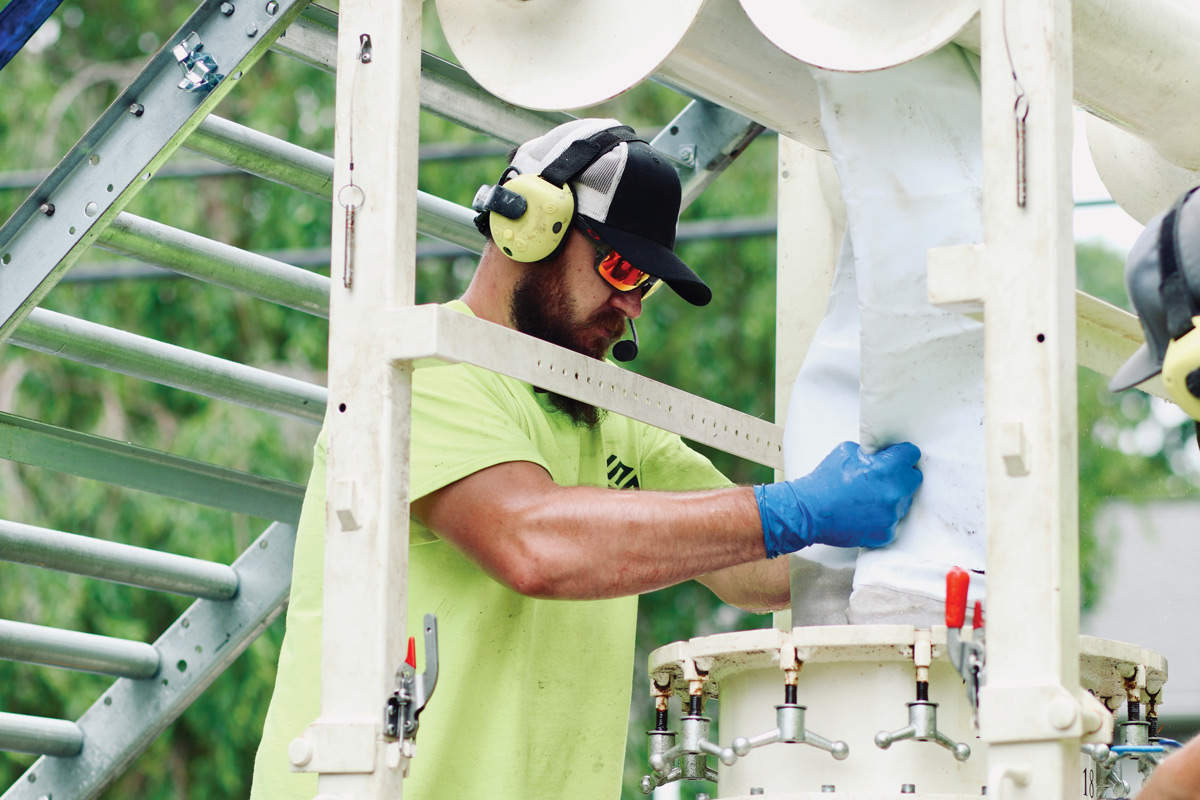
Understanding Biogenic Corrosion and Its Effect on Portland Cement Wastewater Collection Infrastructure
Around the World, deterioration of wastewater collection infrastructure due to H2S biogenic corrosion is a serious headache for owners and operators. Wastewater collection infrastructure such as gravity pipes, manholes, tanks, lift stations, control structures, and force mains are typically constructed with Portland cement concrete. Portland cement is a calcium silicate and its hydration inescapably liberates calcium hydroxide Ca(OH)2. Sewer bacteria excrete sulfuric acid H2SO4 which reacts with the liberated calcium hydroxide according to the following reaction:
Ca(OH)2 + H2SO4 ——> CaSO4 + 2H2O
This reaction produces gypsum and water. In a humid sewer environment, gypsum is dissolved. This ongoing disruptive phenomenon continually leaves a fresh layer of Portland cement for attack.

The H2S biogenic corrosion mechanism is a well-known phenomenon but the specifics of the process are sometimes misunderstood. Surprisingly, wastewater itself is rarely corrosive. The corrosion begins with H2S created by the decomposition of the organic materials within the wastewater. This H2S builds in concentration in the areas of laminar flow. The H2S is then released into the sewerage network in areas of turbulent flow (outfall and force main type situations). Turbulent flow can occur in numerous areas of the system, including piping systems, manholes, pumping situations, treatment plants, etc. This turbulent flow causes the dissolved H2S to become an airborne H2S gas. Factors that can enhance this biogenic corrosion cycle include long retention times, high ambient temperatures, flat terrain, and low flow values. With the current growth of outlying suburban areas, feeding into the existing infrastructure of larger metropolitan areas, these factors are becoming increasingly prevalent throughout the world as treatment plants are commonly several miles from the city center, requiring very long distances to transport the effluent. SewperCoat® by Imerys is a 100% calcium aluminate mortar (both cement and aggregate system), 100% of the product has the ability to neutralize acid and inhibit bacterial activity. SewperCoat® is a cured-in-place, spray-applied cementitious liner that delivers a unique, proven, and radically different trenchless repair strategy: trenchless repair with an easy-to-apply cementitious system able to resist the most severe biogenic corrosion conditions. SewperCoat® bonds well to moist surfaces, and provides rock solid structural rehabilitation within a few hours.





Comments are closed here.